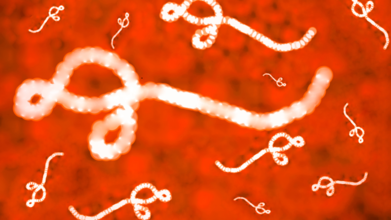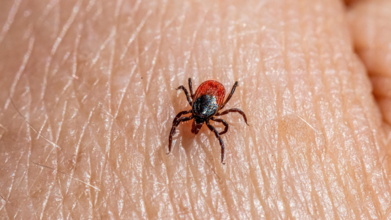- Health Conditions A-Z
- Health & Wellness
- Nutrition
- Fitness
- Health News
- Ayurveda
- Videos
- Medicine A-Z
- Parenting
- Web Stories
Alcohol Deaths On Rise In UK: Here's How It Impacts Your Brain

Alcoholism (Credit: Canva)
Alcoholism has become a pressing health issue. Latest statistics show that the number of deaths caused solely by alcohol in England has surged over the past four years, with government figures showing a troubling 42% rise from 2019 to 2023. More than 8,200 people died due to alcohol-related causes in 2023. As per BBC, alcohol-related deaths primarily affect men under 75, with liver disease being the leading cause. This trend was substantiated by a recent analysis by the Institute of Alcohol Studies, which indicated that the 55-74 age group has become the heaviest-drinking demographic, potentially driving this alarming trend.
Why The Increase?
Experts point to several factors behind the rise in alcohol-related deaths:Firstly, it is the cost of living. According to the researchers, economic stress triggered this abuse. While some cut back on drinking to save money, others turn to alcohol as a coping mechanism for stress.
Also, there has been a recorded increase in drinking among older age groups. This may also reflect changing social behaviours over time.
What Exactly Is Alcohol?
Alcohol is a chemical compound that typically refers to ethanol, the type found in alcoholic beverages like beer, wine, and spirits. It is produced through the fermentation of sugars by yeast, and when consumed, it acts as a depressant on the central nervous system.
What Does Alcohol Do To Your Brain?
Primarily, alcohol interferes with the brain's communication pathways. According to the National Institutes of Health (NIH), alcohol can also alter how the brain looks and functions. It disrupts the areas of the brain responsible for balance, memory, speech, and judgment, increasing the likelihood of injuries and other negative outcomes. Long-term alcohol consumption can permanently change neural pathways, leading to lasting cognitive and emotional effects.
Moreover, it is a proven fact that alcohol can worsen mood swings. Recent research shows that alcohol may exacerbate symptoms of bipolar disorder by destabilizing mood, which impacts efficiency at work. Alcohol also affects conditions like depression, and panic disorder, and can trigger impulsive behaviour. Additionally, alcohol has been shown to disrupt sleep patterns, making it harder to get restorative rest.
Alcohol Shrinks Your Brain Too
A study led by Harvard University professor Dr Kenneth J Mukamal found that brain volume shrank in proportion to the amount of alcohol consumed, even in light drinkers, compared to teetotalers. Dr Mukamal noted that this shrinkage may not be due to brain cell loss but rather changes in brain fluid levels. "There's a great deal of doubt about whether the atrophy seen on MRI scans is caused by brain cell death or fluid shifts within the brain," he explains. He also points out that the atrophy caused by alcohol consumption shows significant improvement within weeks after an alcoholic stops drinking, suggesting the shrinkage is reversible.
This 24-Year-Old Was Suffering With Frequent Migraines: Neurologist Shares This Simple Trick That Helped

(Credit- Canva)
For four years, 24-year-old Sneha suffered from severe, one-sided headaches that felt like a storm. These attacks, which were often accompanied by nausea and sensitivity to light, left her exhausted and anxious. Living in a small town, she saw many doctors, but nothing seemed to help. Her parents watched helplessly as their once cheerful daughter spent her days in a dark room, adding to Sneha's despair.
In a recent post on social media platform, Dr Sudhir Kumar MD, shared the case of a young women who was suffering with debilitating migraines. Despite the seriousness of her condition, doctors were unable to find what could help her. But a trick that she did out of sheer desperation, turned out to be the answer to her problem
Simple Home Remedy For Migraine
One day, out of pure frustration, Sneha grabbed a cold pack, pressed it to her forehead, and wrapped a soft headband tightly around her head. To her surprise, the pain began to ease. The relief wasn't always complete, but even a little bit was enough to give her hope for the first time in years. This small "hack" made her feel like she wasn't completely helpless against her pain.
Also Read: Do This 1 Thing Before You Pop A Pill For Your Migraine, According To Pharmacist
When Sneha and her parents finally visited Dr. Kumar, they were tired but hopeful. She hesitantly told him about her simple trick, worried he might dismiss it. Instead, he reassured her that it was a safe method and explained that many patients find comfort from cold therapy and gentle pressure on the head. He told her she could continue to use it at home as a supportive measure.
Can Migraines Be Mistaken As Headaches?
After a careful evaluation, Dr. Kumar confirmed Sneha’s diagnosis of migraine. He started her on a proper medical treatment plan and, importantly, discussed preventive strategies. He advised her on simple lifestyle changes, such as getting consistent sleep, staying hydrated, managing stress, and avoiding certain food triggers that could set off her attacks.
As the doctor explained the plan, Sneha’s parents' faces filled with relief. They finally had answers and a clear path forward. Sneha herself smiled for the first time during their conversation, a genuine smile that showed she no longer felt alone in her fight against this debilitating illness.
How To Tell the Difference Between Migraines and Headaches?
Despite being a common problem, not many people know how to differentiate between a headache and migraine. According to the NKC Health organization, the key difference between a headache and a migraine is how severe the pain is. Headaches can range from a dull ache to a sharp pain, but migraines are often so debilitating that they can stop you in your tracks. A common way to remember migraine symptoms is the acronym POUND:
- Pulsating pain that throbs.
- One-day duration for a severe attack.
- Unilateral (one-sided) pain.
- Nausea and vomiting.
- Disabling intensity that keeps you from your daily activities.
- Migraines also often come with other symptoms, like a sensitivity to light
What You Should Know About Migraines
Dr Kumar highlighted several key points about migraines from Sneha’s experience.
- Migraine is a serious illness, not just a headache. It can be disabling and emotionally draining for both patients and their families.
- Simple home remedies like cold packs, headbands, and resting in a quiet, dark room can offer temporary comfort.
- These home remedies are helpful but not a substitute for professional medical care.
- It's crucial to see a doctor to get a proper diagnosis, the right treatment, and personalized advice on prevention.
Ebola Outbreak: Why African Countries Are Disproportionately Impacted By The Disease?

Credits: Canva
The recent outbreak of Ebola Virus Disease, with confirmed 81 cases have brought this question again to the world: Why are African countries disproportionately impacted by Ebola Outbreaks?
The Ebola Virus Disease (EVD) outbreaks have periodically occurred in affected regions of West and sub-Saharan Africa since the emergence of EVD in 1976. It continues to remain endemic in these regions to this day, whereas, it has been eradicated from other areas.
To understand why certain regions are disproportionately impacted, we must understand these followings.
Pathology Of The Virus
Ebola’s incubation period can last from 2 to 21 days, but transmission begins only when symptoms appear. Once it strikes, the disease moves swiftly. Without supportive care, like IV fluids, antibiotics, dialysis, or specialized infection control, the fatality rate can soar up to 70% in places like Liberia, Sierra Leone, and Guinea. Compare that to the 2014 Ebola scare in the United States: nine cases, just one death, and zero spread beyond the initial outbreak. The contrast underscores a painful truth, Ebola is not only a medical problem but also a systemic one.
The Lack Of Resources
In countries like the US, hospitals are equipped with rehydration tools, multiple blood pressure medications, and well-trained doctors. They also have strict infection control systems to prevent the disease from moving beyond hospital walls.
In contrast, in many West African facilities, even the most basic supplies can run out. During the 2014 West Africa outbreak, some hospitals stocked just one type of blood pressure drug, hardly enough to save lives when patients’ bodies responded differently.
Also Read: Ebola Outbreak Update: Vaccines Continue To Arrive As Congo Yet Again Becomes Disease Hotspot
The disparity in staffing is equally grim. The US has about 245 doctors for every 100,000 people. Liberia, Sierra Leone, and Guinea? Just 1.4, 2.2, and 10 per 100,000, respectively, notes University of Michigan's School of Public Health. In a disease outbreak where immediate and skilled intervention can mean the difference between containment and chaos, this shortage is devastating.
Violence and Distrust: The Invisible Enemy
But Ebola doesn’t just thrive on weak health systems, it feeds on broken trust. Many African nations hardest hit by Ebola have been scarred by years of civil conflict. Public health systems, roads, and communications were already fragile before the virus appeared. In Sierra Leone, Guinea, and Liberia, the memory of political violence and neglect fueled deep distrust of governments and outsiders.
During the 2014–2016 epidemic, attacks on doctors and aid workers became common. Rumors spread faster than the virus: some communities believed Ebola was a foreign invention, others feared that medical workers were spreading it deliberately. When burial traditions, like washing and touching the dead, were discouraged by officials, resistance turned violent, noted the report by University of Michigan. Cultural clashes and misinformation made every effort to contain the disease harder, often putting lives at even greater risk.
Why Ebola Persists
Ebola remains endemic in parts of Africa because it is more than a virus, it’s a reflection of the gaps in public health, governance, and community trust. The combination of limited resources, dangerously low numbers of medical staff, fragile infrastructures, and deep-seated distrust creates a cycle where each outbreak threatens to become a catastrophe.
Until these systems are rebuilt, hospitals resourced, communities engaged, and trust restored, Ebola will continue to lurk, waiting for its next chance to reemerge.
What Is Babesia That Could Block Your Lyme Disease Recovery?

Credits: Canva
Lyme disease is often described as a medical puzzle. Many patients expect recovery after treatment, but for some, lingering symptoms like fatigue, sweats, palpitations, or breathing difficulties, continue to disrupt daily life. Increasingly, researchers and practitioners are recognizing that a hidden co-infection may be responsible: Babesia.
Though transmitted by the same ticks that spread Lyme disease, Babesia is a parasite rather than a bacterium. This means that while standard antibiotics for Lyme may clear Borrelia burgdorferi (the Lyme-causing bacteria), they do not affect Babesia. If left untreated, the infection can stall or even derail recovery.
What Is Babesia?
Alexis Chesney, MS, ND, LAc, who is also a naturopathic physician, acupuncturist, author, and educator specializing in Lyme and vector-borne disease, writes that Babesia is a malaria-like parasite that invades red blood cells, belonging to the phylum Apicomplexa.
Also Read: Ebola Outbreak Update: Vaccines Continue To Arrive As Congo Yet Again Becomes Disease Hotspot
First described in the late 19th century, it has since been identified in multiple species, with Babesia microti and Babesia duncani being most common in the U.S. The Centers for Disease Control and Prevention (CDC) recently reported a rise in cases across the Northeast and upper Midwest, even declaring Vermont, New Hampshire, and Maine as endemic states.
The parasite is transmitted by the blacklegged tick (Ixodes scapularis) in the East and Midwest, and Ixodes pacificus in the West. Transmission can occur within 36 hours of tick attachment, making timely removal critical.
How Babesia Blocks Lyme Recovery
Lyme disease is caused by bacteria, while Babesia is a protozoan parasite. The difference is crucial: antibiotics like doxycycline or ceftriaxone, typically prescribed for Lyme, have no effect on Babesia. When this parasitic infection is overlooked, patients often remain sick despite completing Lyme treatment.
This overlap of infections is common in regions where both pathogens circulate. Patients coinfected with Babesia and Lyme may experience a tougher, more prolonged illness, with night sweats, air hunger (difficulty breathing at rest), and palpitations serving as hallmark clues that Lyme alone isn’t to blame.
Symptoms to Watch
Babesia symptoms can vary widely, from mild to life-threatening. Common complaints include:
- Excessive sweating or night sweats
- Crushing fatigue
- Shortness of breath or “air hunger”
- Heart palpitations or chest pain
- Headaches and joint aches
In severe cases, particularly in older adults, immunocompromised individuals, or those without a spleen, Babesia may cause hemolytic anemia, kidney problems, and organ stress.
Diagnosis
Because symptoms overlap with Lyme disease, Babesia often goes undiagnosed without specific testing. Traditional options include:
Blood smear (Giemsa-stained): A classic but limited method, as only a tiny fraction of red blood cells may show parasites in early or chronic cases.
PCR testing: Detects Babesia DNA with high sensitivity in acute infections.
FISH (fluorescence in situ hybridization): A more advanced method that detects Babesia RNA, distinguishing between live and dead parasites and proving especially valuable in chronic disease.
Accurate testing is critical, as untreated Babesia can persist and block progress against Lyme.
Treatment Approaches
Conventional treatment generally involves a combination of atovaquone and azithromycin for 7–10 days in mild to moderate cases. More severe or persistent infections may require longer regimens, sometimes with alternative drugs like clindamycin and quinine. However, treatment failures and drug resistance have been reported.
Naturopathic and integrative therapies are increasingly used alongside pharmaceuticals. Herbs such as Cryptolepis sanguinolenta, Artemisia annua (Sweet Annie), Polygonum cuspidatum (Japanese Knotweed), and Scutellaria baicalensis (Chinese skullcap) have shown anti-Babesia activity in laboratory studies. These botanicals not only target parasites but also support the immune system, reduce inflammation, and protect red blood cells.
Some practitioners also use anti-biofilm agents like serrapeptase or lumbrokinase to break down protective barriers that Babesia forms, making antimicrobial treatment more effective.
Why Awareness Matters
As Babesia spreads to new geographic regions, it is critical for healthcare providers to recognize its role in chronic illness. Ignoring Babesia may leave patients trapped in a cycle of incomplete Lyme recovery, chasing symptoms without lasting relief. A thorough approach that screens for co-infections and treats them comprehensively is essential.
For patients struggling with ongoing fatigue, sweats, or unexplained heart and lung symptoms after Lyme treatment, the missing piece could be Babesia. Recognizing and addressing this stealth parasite may be the key to finally breaking through to recovery.
© 2024 Bennett, Coleman & Company Limited

